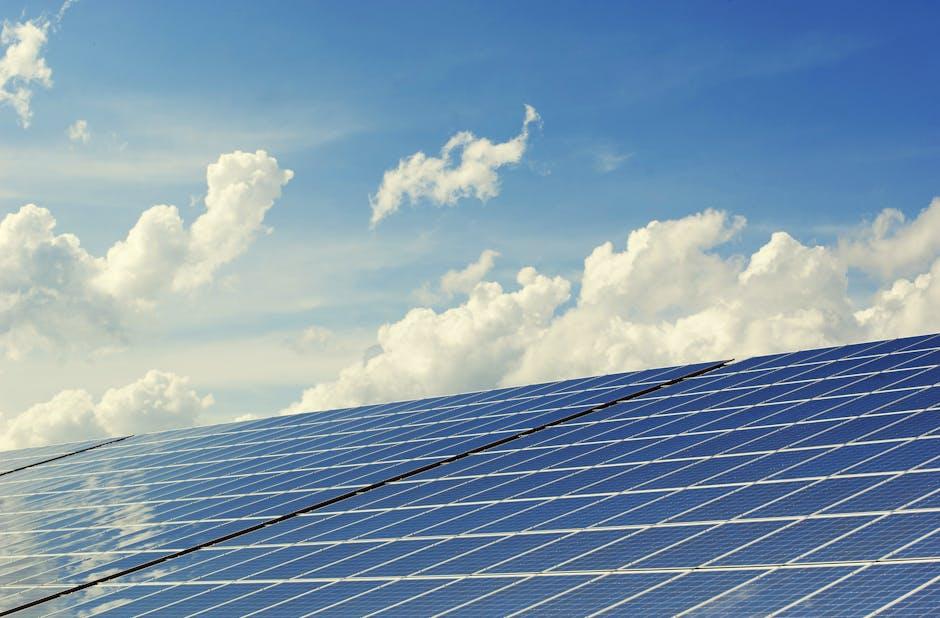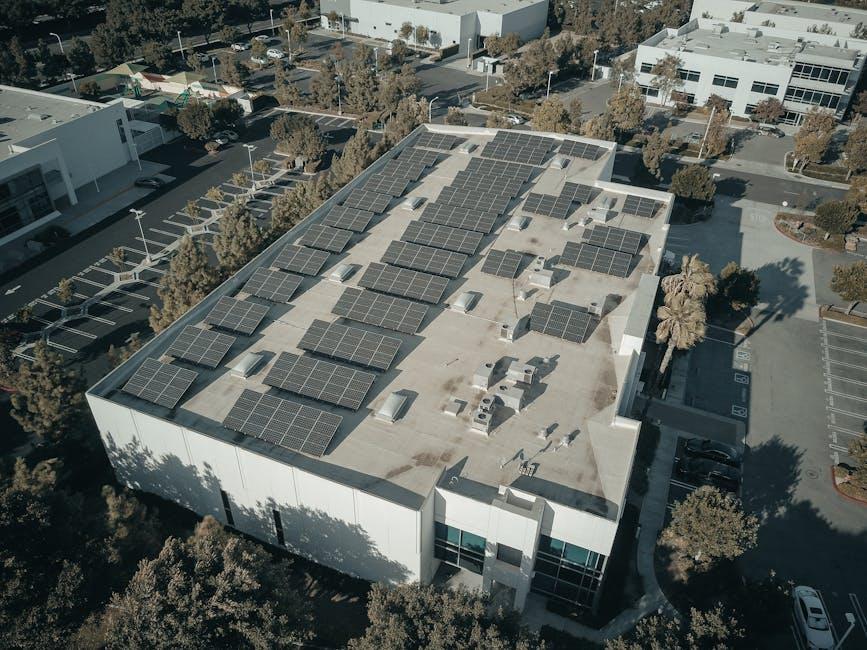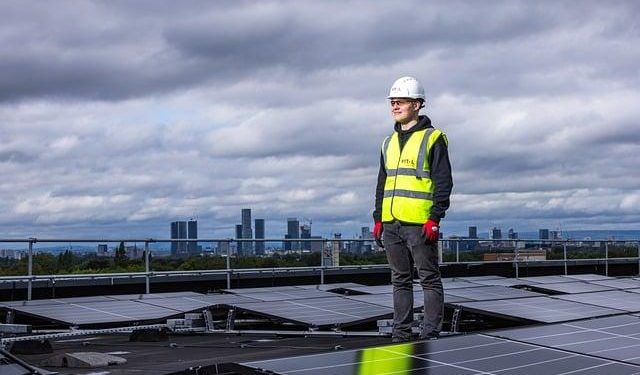In a world increasingly powered by the sun, the dance between innovation and reliability unfolds on a grand stage. Solar energy, once a futuristic vision, has become a cornerstone of modern energy strategies, promising a cleaner, greener tomorrow. Yet, as panels proliferate and costs plummet, a question emerges from the shadows: Are these financial shifts inadvertently nudging our power grids toward instability? In this exploration, we delve into the intricate balance of solar affordability and grid reliability, seeking to understand the nuanced interplay that defines our energy future. With the sun as our guide, we embark on a journey through the evolving landscape of power, where every ray of light illuminates both opportunity and challenge.
Impact of Solar Costs on Grid Stability
The transformation of energy markets has sparked a lively debate about the implications of plummeting solar costs on the electricity grid. As the price of solar technology continues to decline, there’s an increasing shift toward renewable energy sources. However, this shift introduces complexities in maintaining grid stability. One of the challenges is the intermittent nature of solar energy, which can cause fluctuations in power supply. Unlike traditional power plants, solar energy production depends on weather conditions, leading to unpredictable supply patterns. These fluctuations require innovative solutions, such as advanced energy storage systems and smarter grid management technologies, to ensure consistent electricity delivery.
- Integration with existing infrastructure: Adapting older grids to accommodate solar energy can be costly and technically challenging.
- Balancing supply and demand: The grid must be able to manage the variable input from solar sources while meeting continuous demand.
- Policy and regulatory frameworks: Effective policies are essential to support the transition and encourage investments in grid modernization.
While the decreasing costs of solar power present an exciting opportunity for a sustainable energy future, they also demand a rethinking of grid management strategies to prevent reliability issues. The key lies in harnessing technological advancements and fostering collaboration between industry stakeholders to craft a resilient, modern grid.
Balancing Renewable Integration with Grid Reliability
As solar energy becomes increasingly affordable, its integration into existing power grids presents both opportunities and challenges. On one hand, the decline in solar costs has made it an attractive option for energy producers and consumers alike. On the other hand, the intermittent nature of solar power raises questions about maintaining grid reliability. Power grids are designed to handle a certain level of variability, but the irregular supply from solar sources requires new strategies and technologies to ensure stability.
To address these concerns, energy providers are exploring several innovative solutions:
- Advanced Energy Storage Systems: By investing in large-scale batteries, grids can store excess solar power generated during peak sunlight hours and release it when demand is high.
- Smart Grid Technologies: Utilizing real-time data, smart grids can dynamically balance supply and demand, making them more resilient to fluctuations in solar energy production.
- Grid Flexibility Enhancements: Implementing flexible grid designs that can quickly adapt to changes in energy input helps maintain consistent service delivery.
While the path forward is complex, these strategies offer promising ways to integrate solar energy without compromising the reliability of the grid.
Technological Innovations for Enhanced Grid Performance
In the quest for more sustainable energy solutions, recent technological advancements are significantly enhancing grid performance. Microgrid systems, for instance, are being deployed to offer more localized and resilient energy solutions, ensuring that communities have access to power even when the main grid faces disruptions. These systems work in tandem with advanced energy storage technologies, which store excess solar energy for use during peak demand periods or when solar generation is low, effectively smoothing out the inconsistencies in energy supply.
Moreover, the integration of smart grid technologies has brought about a paradigm shift in how grids operate. By utilizing real-time data analytics and machine learning, these systems can predict and respond to fluctuations in energy demand and supply more efficiently. This not only enhances reliability but also optimizes energy distribution across the grid. Additionally, demand response programs are empowering consumers to play an active role in grid management, offering incentives to reduce or shift their electricity usage during peak periods, thus contributing to a more balanced and reliable grid infrastructure.

Strategic Policy Recommendations for Sustainable Energy Transition
In the pursuit of a sustainable energy transition, the integration of solar power into the grid presents both opportunities and challenges. To ensure that solar energy contributes to a more reliable grid, strategic policy recommendations are essential. Key areas of focus include:
- Investment in Energy Storage: To counteract the intermittent nature of solar power, substantial investment in energy storage technologies such as batteries and pumped hydro storage is crucial. These solutions can help stabilize the grid by storing excess solar energy for use during periods of low sunlight.
- Grid Modernization: Upgrading the grid infrastructure is vital to accommodate the influx of solar energy. This includes enhancing transmission lines and implementing smart grid technologies that allow for better management of energy flows and integration of distributed energy resources.
- Policy and Regulatory Support: Establishing clear and supportive regulatory frameworks is necessary to encourage the adoption of solar power while maintaining grid reliability. This may involve incentives for solar-plus-storage systems and setting standards for grid interconnection.
- Research and Development: Continued investment in R&D is essential to drive innovation in solar technology and grid integration solutions. By advancing these areas, we can overcome technical challenges and enhance the efficiency and reliability of solar energy systems.
By implementing these strategies, we can harness the benefits of solar energy while ensuring the grid remains resilient and reliable for future generations.
In Conclusion
As we stand on the precipice of an energy revolution, the interplay between solar costs and grid reliability presents a complex tapestry of challenges and opportunities. While the sun promises a future of clean and abundant energy, the path to seamlessly integrating this power source into our existing infrastructure is fraught with technical and economic hurdles. As stakeholders across the spectrum—from policymakers to engineers, and from energy providers to consumers—navigate this evolving landscape, one truth remains clear: the quest for a balanced and resilient energy future demands innovation, collaboration, and foresight. Only by weaving together the threads of technology, policy, and public engagement can we hope to illuminate a path that harmonizes the promise of solar with the stability of our grid. In this intricate dance of progress, the sun may indeed guide our way, but it is our collective ingenuity that will determine the harmony of its light.

































